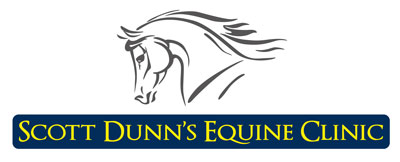There are several different ways to achieve this but in the horse, the procedure is normally surgical. Problems can arise when one or both testicles are not fully descended into the scrotum. A colt or stallion in which this is the case is called a rig or cryptorchid.
When should the testicles appear?
During a colt foal’s development in the womb, the testicles form close to the kidneys and then ‘migrate’ down and through a short tunnel in the abdominal wall (called the inguinal canal) before they take up their normal position in the scrotum. In many colt foals, the testicles are present in the scrotum at birth and in others they usually have descended by around eight to 10 months of age. If they have not appeared by this time they are unlikely to do so.
Why are horses castrated?
Most male horses are castrated for convenience in order to eliminate or reduce male behaviour such as aggression and uncooperativeness in those horses that are not intended for breeding purposes.
What is the procedure if I want my colt to be castrated?
Colts can be castrated at any age from a few months to several years old. In any instance, it is necessary to confirm that there are two testicles present before proceeding. Some colts have two descended testicles but one might be held high in the inguinal canal and this might affect the technique used.
There are three main approaches to castrating colts. For horses under three years old we prefer to castrate with the colt sedated and standing. In these, local anaesthetic is injected into the testicle and the surrounding tissues. A longitudinal cut is made into the bottom of the scrotum, through the pouch-like supporting tissues (the tunic) and into one testicle on one side. The testicle attached by its cord is then pulled down and out of the incision. A special cut-and-clamp instrument (emasculator) is applied across the blood vessels, muscle and vas deferens in the cord above the testicle, making sure that the entire testicle and epididymis are removed.
The clamp is held in place for two to three minutes to make sure that the severed cord blood vessels are sealed. The procedure is repeated on the other side. The incisions are left open. This is called an ‘open’ technique as none of the internal or external tissues are stitched or tied off during the procedure.
In very young, small, unhandled or difficult to handle horses it is often preferred to castrate them under general anaesthetic using the same open technique. Doing it this way enables small or high testicles to be reached more safely and efficiently and is safer for the vet. However, it does carry the usual risks associated with general anaesthesia, such as injury during recovery.
If done this way at home, you must ensure that you have a large enough area that has good grass cover or where you can put down enough bedding to create a safe place for induction and recovery.
Postoperative management after open castration involves providing plenty of exercise to help control swelling and encourage drainage, antibiotics and anti-inflammatory medication and local cold hosing.
In older male horses or sometimes more valuable colts or stallions, a ‘closed’ technique under general anaesthesia can be used. This requires access to the operating theatre, as strict surgical asepsis is required. Under general anaesthesia, the scrotal skin is cut but the tunic and testicle are left intact. A surgical suture is tied around the tunic, blood vessels and vas deferens and the emasculator applied below this suture. Each testicle is removed and the incisions in the scrotum are sutured closed.
This technique has the advantages of reduced after care and lower risk of haemorrhage. It is, however, more expensive to perform. These horses need restricted exercise for at least a week after surgery but can then be gradually returned to normal work.
Possible rig
Sometimes a horse, which is believed to be a gelding, shows stallion-like behaviour and it may be necessary perform blood hormone tests to discover if it is a gelding or colt. In other cases, a colt with an unknown history may be purchased with a single descended testicle. In this case it is most likely that the other has been retained, either within the abdomen or very high in the inguinal region. Veterinary examination and sometimes further investigations may be required to clarify this.
Unilateral castration, leaving an undescended testicle in place, should be avoided as it can result in difficulties for a new owner, if the information is not passed on. Healed castration scars can often be difficult to confirm visually.
Retained testicles have a theoretically higher risk of developing tumours later in the horse’s life. Occasionally, the non-scrotal testicle may simply be sitting inside the inguinal canal and require a ‘tug’ to access it for removal. However, in most cases, the testicle is higher in the inguinal canal or retained in the abdomen.
Under sedation veterinary palpation of the inguinal canal and per-rectum may sometimes locate the retained testicle if it is high up in or at the entrance to the canal. In these cases, surgical exploration will be required to resolve the situation. Depending on the site of retention abdominal (laparotomy – under general anaesthetic) surgery may be indicated as the best approach and in some cases keyhole surgery laparoscopy may be performed.
If you are unsure if the colt might have been previously unilaterally (one side only) castrated, the descended testicle can be removed and then blood hormone tests performed a few weeks later to see if there is any other testicular tissue left.
Similarly, if an apparent gelding is showing rig-like behaviour, blood hormone tests can be performed to determine if functional (hormone-producing) testicular tissue is still present, either a retained testicle or remnants of testicular tissue, usually on the severed cord, following previous castration (sometimes called ‘cut proud’).
What do the tests involve?
The testicles are responsible for producing the hormone testosterone. In an entire colt after puberty, the testosterone levels in a blood sample are always high. In a true gelding, they are low and remain low even after stimulation with another hormone (hCG) given by intravenous injection In a rig, the testosterone level will rise significantly after injection of hCG.
The test involves taking a blood at time 0 and immediately injecting hCG. A second blood sample is taken 30 to 120 minutes later and the results compared. A more convenient single blood test can be used to measure oestrone sulphate levels in colts providing they are over three years of age. This test cannot be used in donkeys.
Post castration complications
Clinical symptoms such as depression, inappetence, colic and fever can occur post-castration which might be related to one of the common complications.
Most of the listed complications below are predominantly related to open castration with closed castration or open castration under general anaesthesia (which has a 0.9% chance of mortality due to anaesthetic risks)
Haemorrhage
Excessive haemorrhage post open castration is the most frequently encountered immediate complication. Haemorrhage from the scrotum for the first couple of hours post open castration can be normal.
A slow drip is acceptable but if more a continuous stream of bleeding the clinic should be called. It might be the case the scrotum might need to be packed or a dripping blood vessel ligated or clamped.
Swelling of the prepuce and scrotum
This is normal unless it is excessive and is no cause for alarm. If can often can occur if there has been premature closure of the scrotal wounds.
This may require the surgical wound to be reopened or in the case of a closed castration some skin stitches to be removed.
Oedema
This can also form forward towards the chest relating to premature closure of the surgical site but is probably of no significance and should go down with exercise
Infection
Superfical infection
This can occur if the surgical site becomes contaminated with organic matter and is a routine expected complication of open castration. This may require veterinary examination with removal of infected tissue. A course of antibiotics and anti-inflammatory medication will be prescribed if required.
Schirrous cord
This can occur as a result of an ascending infection from the scrotum. This condition may respond to debriding with a course of antibiotics and anti-inflammatories. In certain case it may require further resection under general anaesthesia.
Schirrous cords can sometimes be found a sometime after castration when the cord has adhered to the skin, forming draining tracts.
Champignon
This is a different type of infection which can occur post castration and again generally requires surgical intervention.
Hydrocoele
This is a fluid filled painless swelling of the scrotum which can slowly increase in size over time. It is a rare complication but is more common using the open castration technique. It may require opening to allow it to drain and possibly be debrided to reduce recurrence.
Eventration
Omental eventration
Small sections of stringy yellow omental prolapsing form the surgical site can be a normal occurrence and may require trimming by a vet to prevent further omentum from following under gravity.
Intestinal eventration
This is a rare complication, which is more likely following open castration of standardbreds and shires. We therefore recommend closed castrations in these breeds.
In certain cases post-castration colic symptoms can be related to inadequate analgesia post castration discomfort or colic due to management changes around the time of castration, including reduced appetite and water consumption
If in doubt about post-castration complications please contact the clinic to speak to a veterinary surgeon who will advise you of the appropriate plan of action.

